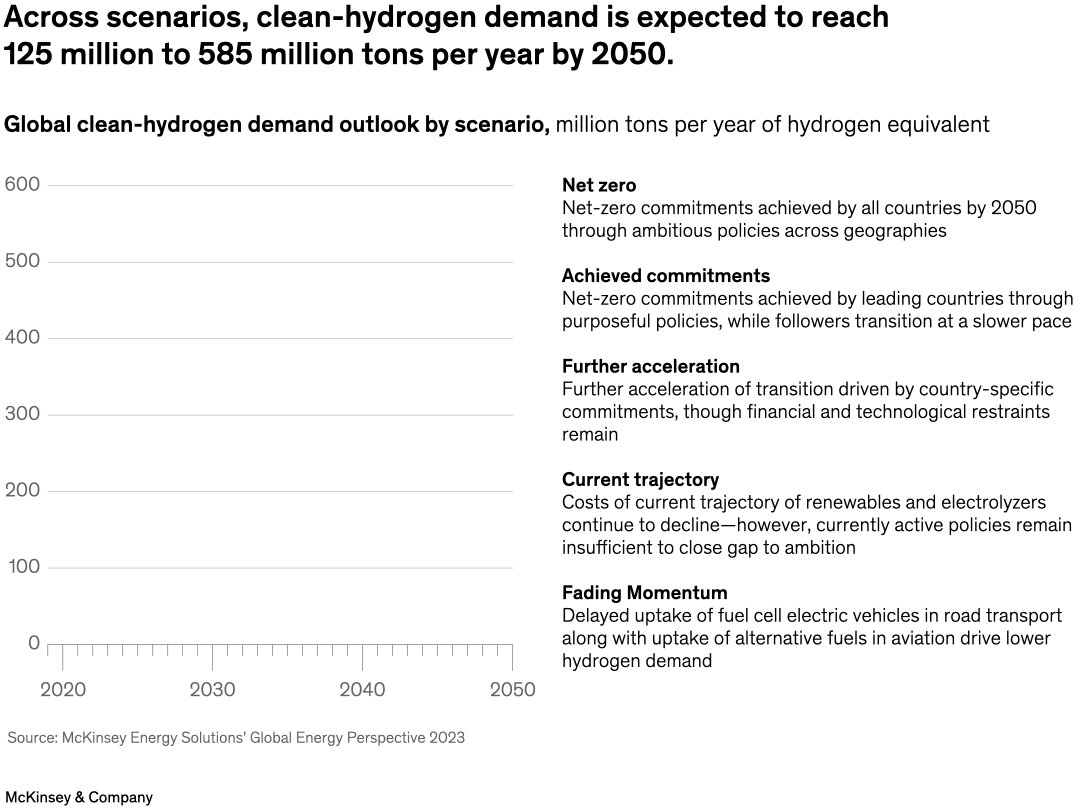Hydrogen could contribute to decarbonizing the energy system, with emerging applications in steel and heavy road transport, for example. But scaling clean hydrogen, which can be produced with renewable energy, will be key. Senior partner Bernd Heid and colleagues note that clean hydrogen could account for 73 to 100 percent of total demand by 2050. The demand increases could vary greatly, however, depending on how far along countries are in the transition to net zero.

Image description:
A line graph shows 5 scenarios for projected global clean-hydrogen demand, 2020 to 2050, in millions of tons (Mt) per year of hydrogen equivalent. The 2050 projections, by scenario, are:
- net zero: net-zero commitments achieved by all countries by 2050, through ambitious policies across geographies, ~580 Mt
- achieved commitments: net-zero commitments achieved by leading countries through purposeful policies, while followers transition at a slower pace, ~450 Mt
- further acceleration: further acceleration of transition driven by country-specific commitments, though financial and technological restraints remain, ~375 Mt
- current trajectory: costs of current trajectory of renewables and electrolyzers continue to decline; however, currently active policies remain insufficient to close gap to ambition, ~265 Mt
- fading momentum: delayed uptake of fuel cell electric vehicles in road transport as well as uptake of alternative fuels in aviation drive lower hydrogen demand, ~130 Mt
Source: McKinsey Energy Solutions’ Global Energy Perspective 2023.
End of image description.
To read the article see “Global Energy Perspective 2023: Hydrogen outlook,” January 10, 2024.